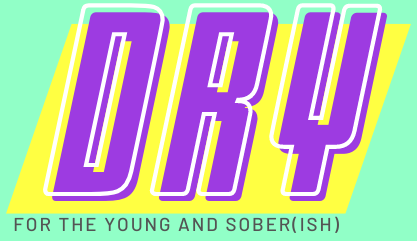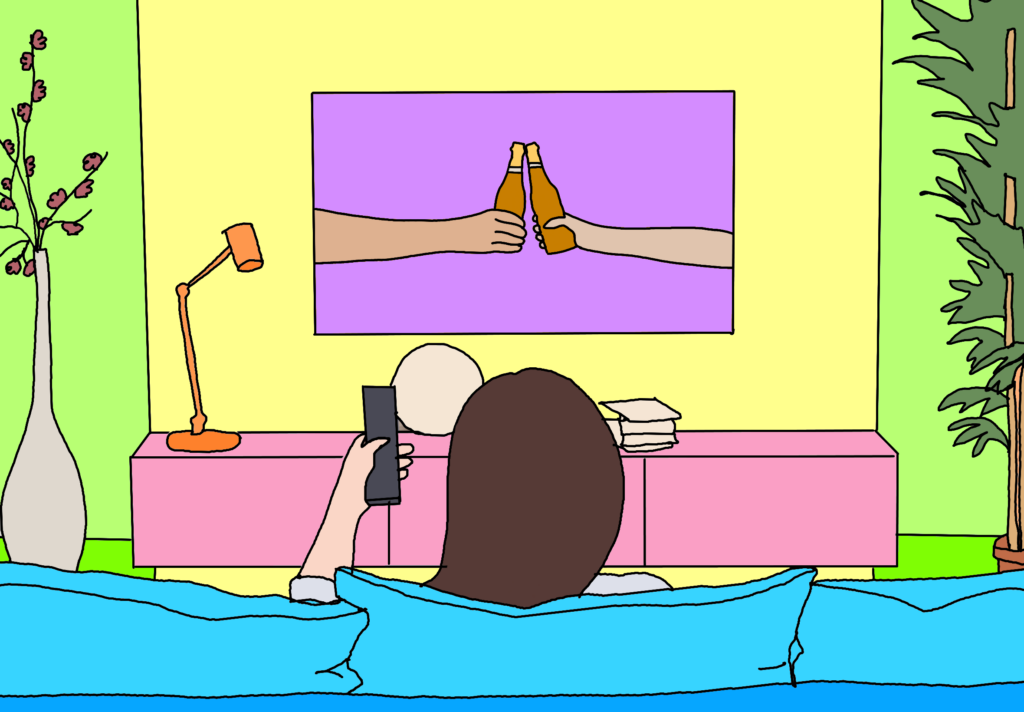The power of pop culture to influence what we watch on TV has elevated shows such as Normal People, Euphoria, Bridgerton, and Peaky Blinders. But have we ever thought about how these shows promote unhealthy relationships with alcohol to their young audiences?
Sites like Netflix and Amazon Prime make infinite streaming a possibility. This means more possibilities for viewing experiences without alcohol marketing in advertisements, but on-demand platforms lack the 9pm watershed, designed to protect under 18’s from potentially harmful content.
“There are different regulations covering video-on-demand platforms compared to terrestrial TV. For example, Amazon Prime is covered by Ofcom, which protects young people from alcohol use glamourisation in programmes,” says Dr Alex Barker, a psychology lecturer at the University of Derby explains. “Netflix is covered by the Audio-Visual Media Services Directive, but this does not comment specifically on alcohol use.”
The Broadcasting Code generally prevents paid-for alcohol product placement in the UK. However, brands can appear on our screens if they are considered to be ‘editorially justified’. Therefore, the alcohol industry can receive widespread population exposure if they are featured at no cost.
Are regulatory bodies doing enough to stop TV shows from marketing alcohol? “This is a big debate,” says Amanda Atkinson, a senior researcher within the Public Health Institute. “We know that marketing in all its forms has influence. In the UK, marketing is regulated by Ofcom and the ASA [Advertising Standards Authority], including restrictions on alcohol marketing in shows where there is a high percentage of young viewers and restrictions on how alcohol can be depicted in advert content.”
However, many young people watch TV via catch-up. “This means existing calls for watersheds do not reflect the way young people currently watch TV,” says Atkinson. Barker agrees: “The current rules and regulations are not sufficient to prevent exposure to potentially harmful content. They need revising to prevent this.”
When we consider what influences people to drink, the role of TV is one of multiple factors, including parental and peer norms and habits. Young audiences may also be influenced by content from TV shows that portray smoking, gambling and junk food.
Recent studies by the researchers at Nottingham Trent University led by Barker suggest there is strong evidence that exposure to alcohol in media content influences alcohol experimentation in young people, with behavioural and health consequences later in life.
Barker draws upon Social Learning Theory to explain that people may copy the drinking behaviour of others due to the nature of reality TV with ‘influencer’ role models. With alcohol abuse normalised as a rite of passage for teenagers, media representation of drinking may increase the likelihood of alcohol-related harm.
“TV shows reflect the normalisation of drinking as part of youth culture, its role in certain femininities and masculinities and the cultural capital and status associated with those,” says Atkinson. “However, we know that more young people are choosing not to drink, or to drink little. For many, alcohol use is no longer regarded as a rite of passage. If we look at how celebrity alcohol use is depicted in the media, there have been recent changes, with more sympathetic reporting of those who experience problematic use, and an increase in positive reporting of celebrities who choose not to drink.”
These factors will have undoubtedly fed into the recent changes in young people’s attitudes to drinking. However, although we can now be more selective with content depicting drinking, on-screen presentations still vary. In some shows, drinking is shown as a normal aspect of day-to-day life and social roles. In others, the potential harm of binge-drinking and the benefits are starting to be highlighted.
Atkinson believes that the normalisation of drinking is used by media producers to add drama. “The potential effects of intoxicated arguments are a way of symbolising identity markers, as what we drink can say a lot about who we are,” she says. “As such, it can help build a character’s identity.”
Drinking scenes also have a practical use. As a predominant social activity, new characters can be brought into hospitality settings with very little context. Alcohol is often used to facilitate the presentation of gender identities and “the degree of conformity and transgression from social norms around ‘acceptable’ femininity and masculinity,” adds Atkinson. Men are depicted drinking pints of beer, while female characters drink ‘feminine’ drinks such as cocktails or wine. Alcohol is often used as a signifier of sexuality, too, when gay men drink ‘feminine’ drinks and lesbian women are shown downing pints.
Atkinson also believes there is a class element: “Soaps, for example, will present more working-class characters as drinking pints, but when presenting men who they wish to depict as more middle class – and what they regard as ‘sophisticated’ – they will depict them drinking red wine.”
With regards to intoxication, TV often reinforces societal attitudes towards gendered drinking. “Intoxicated men are presented as humorous, while intoxicated women are presented as tragic, messy and sexually promiscuous, transgressing the social expectation of women as reserved and in control,” says Atkinson.
Fortunately, over the last decade, there has been a shift in how alcohol is portrayed on screen. Shows like The Flight Attendant and The Dry give attention to sobriety and focus less on celebratory alcohol use. So, young people have more representations of social culture that doesn’t revolve around alcohol use.
Atkinson draws on the example of reality TV show Love Island, a show that depicts alcohol use regularly but “does not show intoxication”. As viewers, we know there are limits on how much participants can drink; a stark contrast to the drinking culture in reality shows like Big Brother in its early days.
Barker has found evidence to suggest that the portrayal of alcohol use on TV could be used to educate young people about the harms of excessive drinking, rather than encouraging unhealthy habits. However, the issue of how problematic alcohol use is depicted remains.
“The ‘alcoholic’ who is physically dependent and must abstain, versus the ‘normal’ drinker, does not reflect real life. Many people can learn to moderate; harmful alcohol use is a spectrum rather than a binary,” says Atkinson. “As such, people may view the stereotype of the alcoholic on TV, compare it to their own drinking, concluding that it is fine and unproblematic, when in fact they are being affected in harmful ways.”
It has been argued that shows like Geordie Shore and Made in Chelsea have the potential to reinforce existing perceptions and alcohol normalities. However, Atkinson gives a message of hope in her belief that we can’t position all young people as “passive actors” in absorbing media messages: “I think many people realise that even reality TV shows are, to some extent, edited and manufactured. People do not consume these messages in a vacuum; life experience and prior knowledge will influence different people in different ways.”
Illustration: Sophie Donne

